
- Browse by Topic
- Magazine & Index
- For Members
- Business Directory
- Join / Renew
Select Page

Special Pressure: P210R Centurion is Unique, Even Among P210s
Posted by Cessna Owner Organization | Sep 16, 2022 | Featured Plane
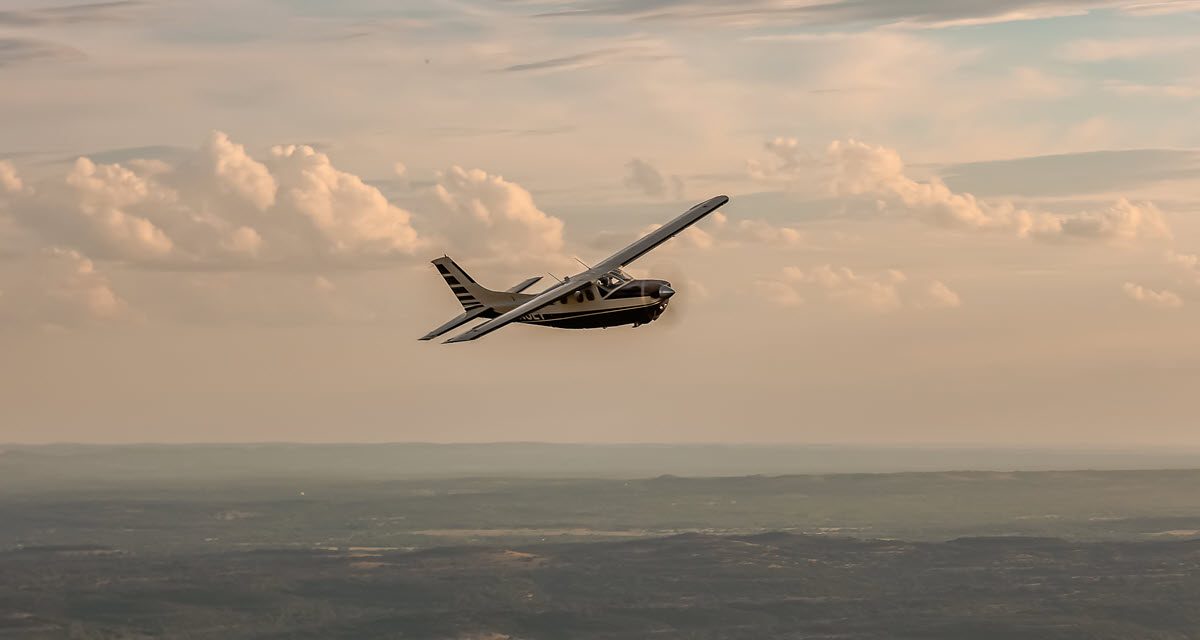
Photos of Russel and Mari Jeanne Moore’s 1985 P210R by Jack Fleetwood ( www.JackFleetwood.com ).
By Rocky Landsverk
When Russel Moore talks about his airplane and about flying, he speaks in third person. It’s always about the people who got him where he is today.
Where he is today, from a piloting perspective, is flying a P210R Centurion, the only pressurized Cessna made before the company stopped single-engine production in 1986, and the best version of the P210 it ever made.
How he got there was via piloting parentage and a string of outstanding instructors and advisers. First on the list is his father. “My father was a lieutenant colonel in the Air Force, and he flew B-52s,” Moore said. “I remember when my mother, brothers, and sisters would go out to visit my father when he was on alert. We would be located by a picnic area where the family members would have a chance to visit with their dads. We would see the enormous planes parked on the tarmac ready to take off at a moment’s notice, with security guards all around the plane because that was during the Cold War, and they were loaded with nuclear weapons.
“When he was not on alert, I remember him taking me to a B-52 simulator on the base. It was full motion with lighting and emergency alarms going off, as I sat in the pilot seat.”
With a start like that, becoming a pilot someday was almost inevitable. Later in this story, we’ll hear about a string of P210 experts who have helped Moore get where he is today. But he was in no hurry to get there; in fact, his younger brother Garrie beat him to it.
“I had a number of breaks in my flight training,” Moore said. “I was able to dry lease a number of planes from different owners because they were either unable to fly, or they lost their medical, or they were trying to sell them, and they needed to have them up in the air. So I would pay for fuel and help in the repairs. I flew a 172 and a 182 that way, a Grumman Cougar, a Barron, and a P210, all before I ever owned an airplane. I was able to rack up a lot of cross-country hours that way.”
Moore compiled 650 hours in the P210 during that time. Garrie became a pilot in 1990 and purchased his first plane, a Cessna Cardinal fixed gear in 1991. He also then purchased a second plane — another Cardinal but with retractable gear.
Russel Moore wasn’t going to be left far behind. Moore’s younger brother beat him to being a pilot, so Russel returned the favor by buying a bigger plane. “He ended up buying a P210, which is the big brother to the Cardinal; they both have cantilever wings,” Moore said. After flying with his brother, Russel had a familiarity with the P210’s handling performance. “So being the big brother, I decided to buy the 210. We became a flying family, and it keeps my brother and I together with similar interests.”
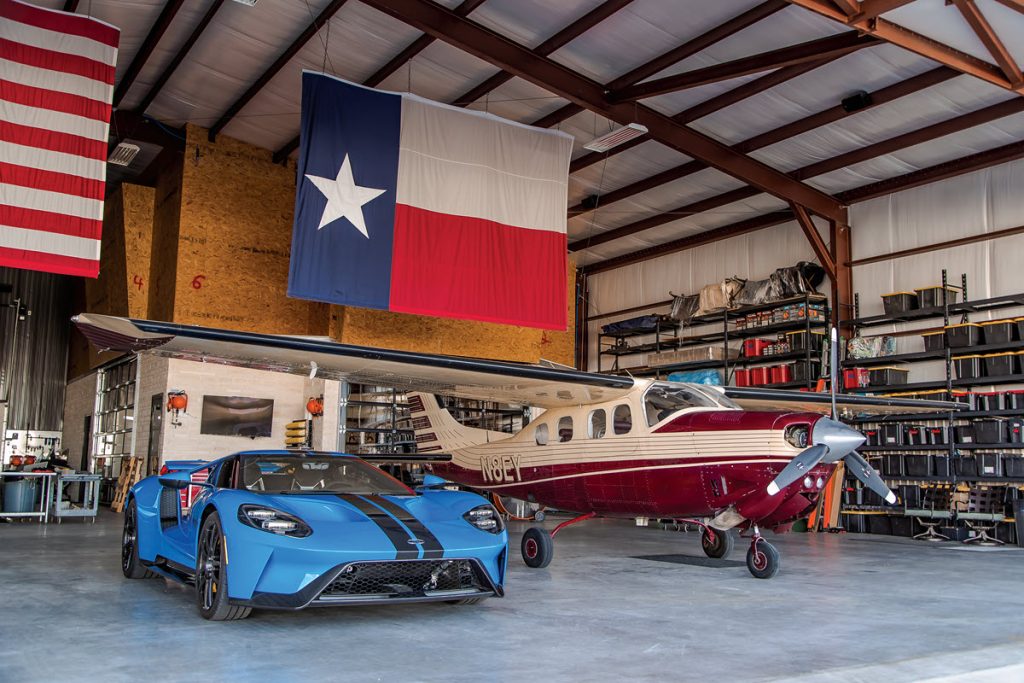
About the P210R
When Cessna first ventured into this higher-end pressurized single, the early versions of the P210 in 1978 were troubled, with ADs and retrofits either required or strongly recommended. Over the years, Cessna fixed and improved this and that, culminating in the P210R, unquestionably the best of the breed. Largely in response to the introduction of the Piper Malibu, Cessna increased the performance, with an engine upgrade to 325 horsepower, extra wingspan that allowed for more fuel in the wings (taking capacity to 115 gallons), and a horizontal stabilizer that was extended by 3 feet. Performance increased greatly. It can fly at 213 knots and is comfortable cruising at 65% power while still reaching 190 knots.
“One of the innovative things that they did to the design, they expanded the wing. I believe it’s an additional 2 feet,” Moore said. “It also has a bit of a larger elevator, so you have lighter pitch forces, and takeoff rotation and landing flare are much more manageable. And by expanding the wings, they were also able to give you those extra gallons, so you don’t have to install an aftermarket unit like the O&N aft tanks.”
Aft tanks create center-of-gravity issues, Moore said, because you’re putting a lot of weight back there. “O&N makes an aft tank, and you put it into the baggage compartment, but now you’ve got roughly 30 gallons at 6 pounds per gallon, 180 pounds in a baggage area that is only supposed to hold 200 pounds,” he said.
You pay for these P210R improvements on the secondary market, of course, and Moore admits he did when he bought this plane in late 2021, but he believes it was worth it. Moore said the pre-purchase process was “arduous, to say the least.”
“I flew all over the United States looking at different P210s,” he said. “I got the help of Chuck McGill, who was scouring the California area for me, and Paul New, who did two pre-purchase inspections for me.”
He eventually found this plane online, and somewhat circumstantially, McGill — a well-known trainer and author who is a P210 expert — was the owner’s rep. “I didn’t want to spend that kind of money for the R model, which is a lot more money than the N model,” Moore said. But in looking at what it would take to upgrade an N model to being what Moore wanted in a plane, he decided it was better to just skip ahead and buy the R model. “I’m 70 years old and decided that from now on, I’m not buying green bananas anymore,” Moore said. “I don’t know if I will be around to see them ripen.”
CESSNA P210R SPECS
More moore mentors.
So far, we’ve mentioned a parent who flew B-52s, and well-known P210 experts Chuck McGill and Paul New. Moore attended some P210 courses run by New, the Cessna expert from Tennessee Aircraft Services, the same Paul New who created a four-hour webinar for COO (learn more at cessnaowner.org/ paul-new ). He also conducted a three-day clinic that goes into depth on the airframe, systems, and engine.
Moore also made a point to talk about his instructor, Niels Caminada, a CFII from the Netherlands. “I was the student, and he was the pilot and instructor, but we have a great friendship beyond that,” Moore said. “I learned a great deal about life. He taught me that especially as a pilot, you can’t point your finger at anybody. You gotta take 100% responsibility for your actions.”
There were even more mentors. “I got with two great instructors from Texas State Aviation, Erik Landrum and George Wilhite,” he said. He got that instruction more recently in his flying career “to knock off a lot of rust because I had over a 10-year span of being inactive.”
We’re not done dropping names yet. He was also an avid reader and follower of Richard Collins, the legendary author and aviation expert who often wrote about his P210. Collins died in 2018 after a long and storied journalism and piloting career.
About This Plane
The panel is pretty much what Moore purchased. He plans to add a Garmin GTX 345 transponder so he can add ADS-B In. He has a Garmin GTS 800, which brings traffic advisory (TAS) but isn’t full-fledged ADS-B In. “It gives me traffic, and I have XM weather, but I’d like ADS-B information as well,” he said. See the panel picture, which has labels to help locate the instruments. Key among them are the Garmin G500 PFD and the Genesys S-TEC autopilot.

One of Moore’s favorite parts of the plane are the speed brakes. In the pictures, it’s below the Mid-Continent unit, to the left of the 430. It’s a push-button annunciator that allows you to deploy the speed brakes. Moore said two of the requirements of his plane were the 55X autopilot, and speed brakes. “I use the speed brakes all the time,” he said. “Coming out of high altitudes, you’re able to increase your descent rate without increasing your speed, and if you’re a little high coming in on an approach, you’re able to use that to get lower, quicker, without having to gain airspeed and maintain your same flight pitch for the run.”
Moore said his primary mission is to “fly and have fun,” but this plane also serves the specific purpose of getting him to his second home in Durango, Colorado, which is at 6,500 feet. “Because this plane is pressurized, it allows me to get over the mountains without everybody having to put on oxygen,” he said.
Next for Moore is probably an M class like the Meridian, or a SOCATA TBM 700C.
“When I spoke to my dad about getting my private, he said, ‘Once you get that, son, I want you to get your instrument ticket,’” Moore said. “I did that, and right after that, he also told me, ‘Now you need to get your multi-engine,’ and I accomplished that. And then he said, ‘Now it’s time to get turbines on those wings’ and I said, ‘Hey, stop it, I can’t afford that!’ But now I’m looking for the turbine to hopefully fulfill that order my father requested.”
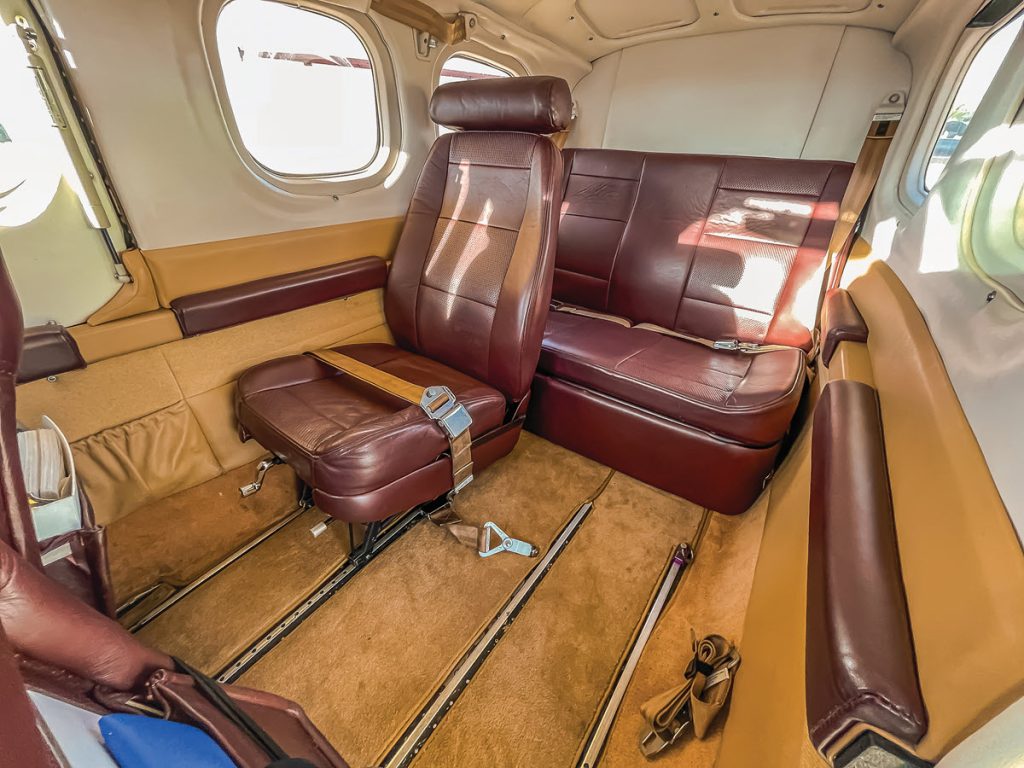
- JP Instruments engine monitor
- Garmin G500 Primary Flight Display (PFD) (behind iPad)
- Mid-Continent Attitude Indicator
- Garmin GTN 750 (GPS, nav/comm, MFD)
- Genesys S-TEC 55X autopilot
- Garmin GNS 430 (WAAS). Hidden behind the copilot yoke in this picture is the Garmin GTX 330ES extended squitter transponder. “That’s the one that someday I want to change out to a 345,” Moore said, referring to the GTX 345 that offers ADS-B In and Out.
About the Man Cave
Moore bought the airplane hangar about two years ago, over a year before he put a plane in it. He’s chipped away at it, and while it’s impressive by any standard already, he’s not yet done with the wall that will honor his father and his father-in-law, both military pilots. “My father-in-law flew Corsairs in World War II, and my dad flew B-52s, and I have pictures of both of them with their medals,” Moore said. “I have a radial engine where we cut the cylinder walls in half and added an electric motor, so you see the propeller and pistons going up and down while the valves open and close.” There’s a large speaker behind the unit that makes radial engine sounds, and the stairway lights up when walking up to the second floor. There are little elements of the Man Cave like automated lights with motion sensors, and oil filters used for can lighting. The large doors with windows ensured the hangar didn’t feel like a basement. There’s also a large trophy wall for animal mounts and a nice office area for his flight simulator equipped with a G500, 750, and 430. Those all work with his X-Plane 11 and Pilot Edge simulator software to keep him active when he’s not in the air.

Select a photo to open a pop-up slide show
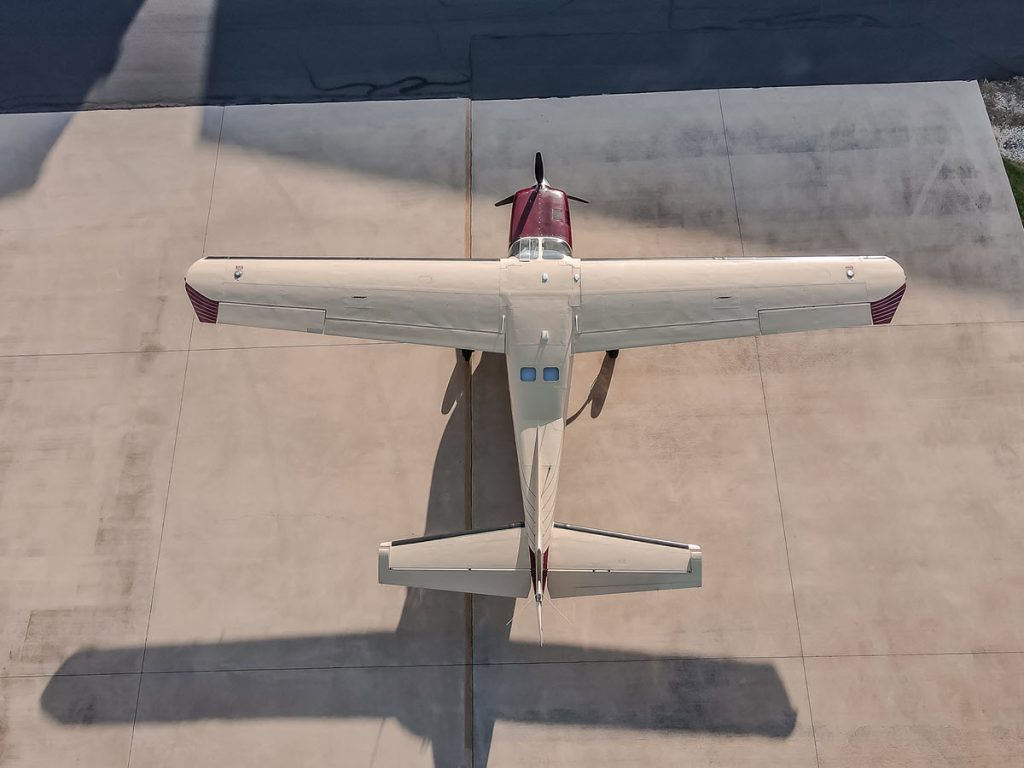
About The Author
Cessna Owner Organization
Articles written or compiled by Cessna Owner Organization staff.
Related Posts
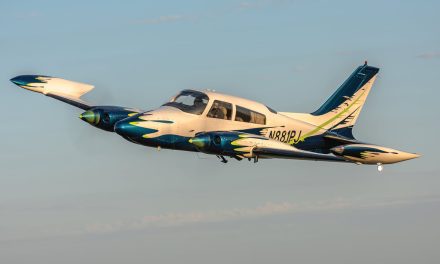
Packed With Pizzazz
June 23, 2023
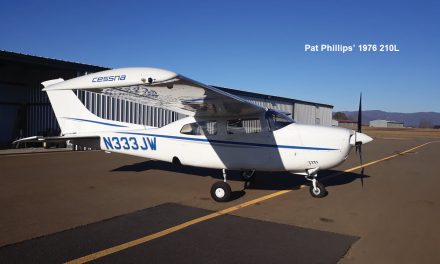
Cessna 210 Market Report & Tips: In-Depth Reviews and Advice from Owners
September 26, 2023

Owner’s Perspective: Cessna 140
April 9, 2020
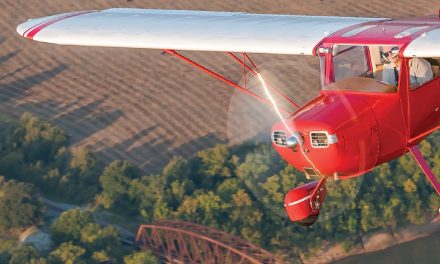

Cessna 140: A Cessna Built for Two, Low-and-slow Cruiser
February 14, 2020
Box A Zone 1
Box b zone 2, box c zone 3, box d zone 4, free digital magazine & newsletters.

Click HERE to choose your FREE download: 172 Owners Guide, 182 Owners Guide, or Digital Magazine.
You have successfully subscribed.
You are here
Cessna p210 pressurized centurion.
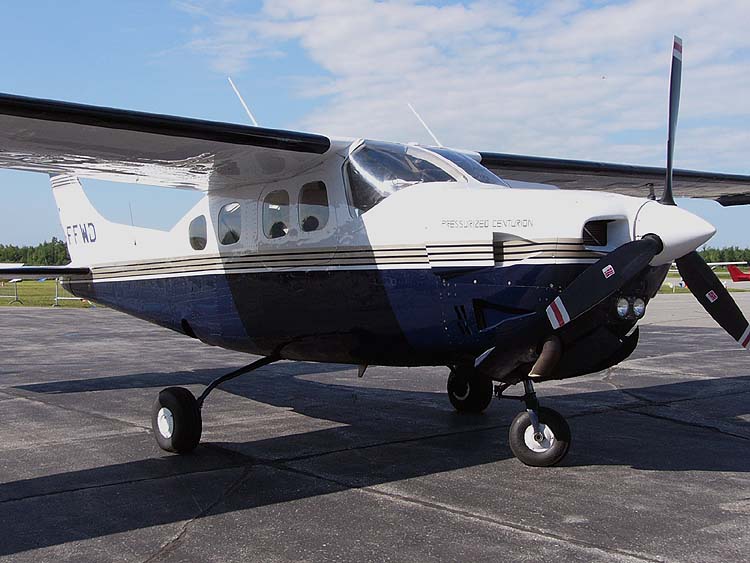
Pressurized CESSNA 210 Centurion . Note: Pressurized version has distinctive small windows. The P210 (turbine) is a modified version with a turbine engine.
1 x 231 kW (310 hp) Continental TSIO-520-AF flat-six turbocharged engine, with three-blade constant-speed metal propeller
SKYbrary Partners:

Safety knowledge contributed by:
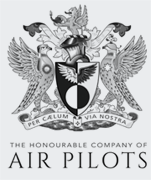
Join SKYbrary
If you wish to contribute or participate in the discussions about articles you are invited to join SKYbrary as a registered user
Message to the Editor
About SKYbrary
What is SKYbrary
Copyright © SKYbrary Aviation Safety, 2021-2024. All rights reserved.
Cessna P210 - Piston
Cessna p210, specifications, performance, photos, faq's, and history of the cessna p210 aircraft, search for jettly flights on cessna p210 aircraft, cessna p210 - aircraft summary, cessna p210 performance, cessna p210 cruise speed, cessna p210 range, cessna p210 takeoff distance, cessna p210 landing distance, cessna p210 fuel burn rate.

CESSNA P210 AIRCRAFT SAFETY RATINGS

CESSNA P210 - AIRCRAFT DETAILS AND FAQ'S
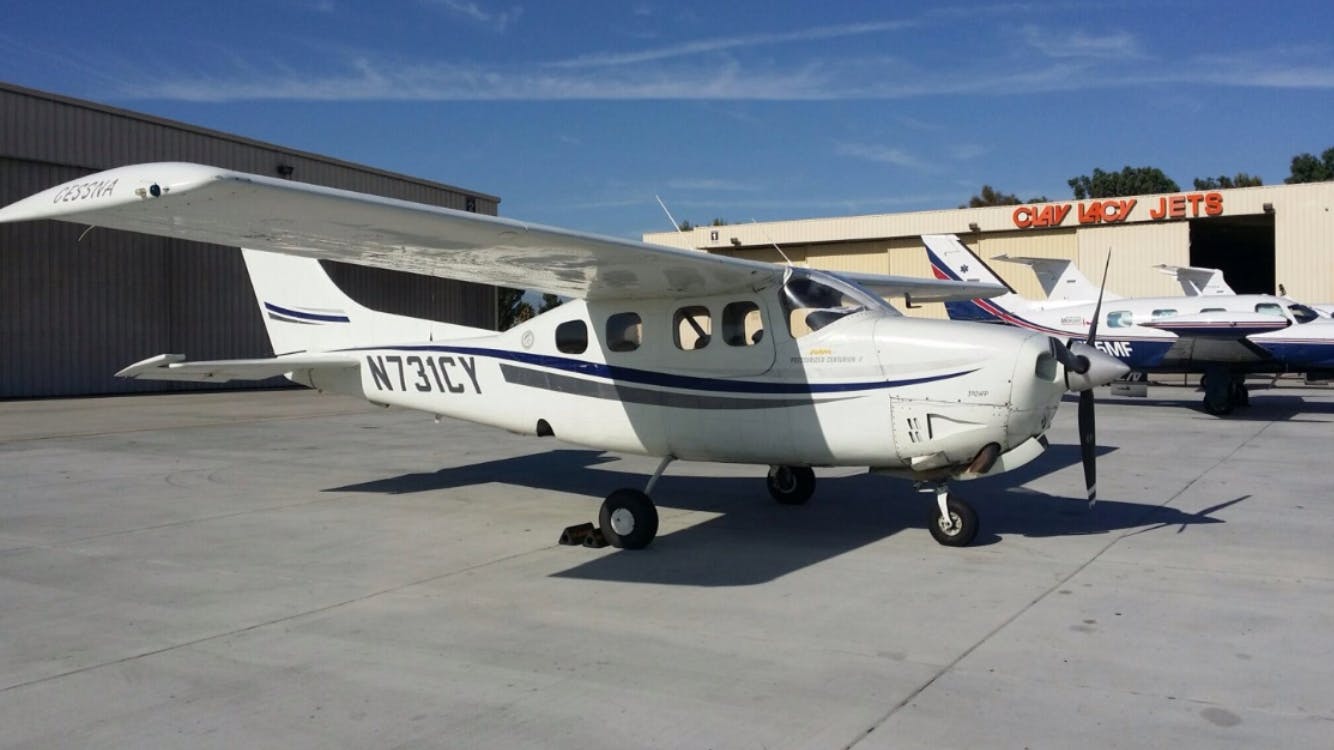
Browse 1 Available Cessna P210 Aircraft For Charter
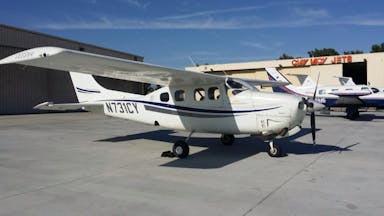

IMAGES
VIDEO
COMMENTS
The P210 is an all metal, six place, high wing, single engine airplane equipped with retractable tricycle landing gear, and a cabin pressurization system. ... Structural Cruising Speed : 167 KIAS : 167 KIAS : Stall Speed Clean : 67 Knots : 65 Knots : Stall Speed Landing Configuration : 58 Knots : 55 Knots : Climb Best Rate : 945 FPM : 1150 FPM :
In 1979, Cessna changed the gear. The main gear doors were removed (theyd been troublesome on the 210), which cost some of the original 196-knot cruise speed and a little climb rate. At the same time, however, the gear-extension speed was raised to the top of the green arc, making it a good speed brake (more about this later).
Cessna turboprop conversion of P210 powered by Allison 250-B17 engine. One converted, flying in 1984. No production. ... Cruise speed: 193 kn (222 mph, 357 km/h) at 20,000 ft (6,100 m) (80% power) Stall speed: 58 kn (67 mph, 107 km/h) (power off, flaps down) Range: ...
Performance Summary. The 210 is an all metal, six place, high wing, single engine airplane equipped with retractable tricycle landing gear and is designed for general utility purposes. This airplane is certificated in the normal category. Spins and aerobatic maneuvers are not permitted in normal category airplanes.
The Cruise Performance tables in the IM lists a cruise speed of 180 knot cruise speeds (80 percent power/17.8 gph) at 10,000 feet and 196 knots for the same power setting/fuel burn at 20,000 feet. ... The P210 is much quieter than a T210 of the same year due to the thicker, smaller windows and the beefed-up structure required to withstand the ...
Landing distance (50′) 1,190. Until the introduction of the Cardinal RG in 1971, the Cessna 210 Centurion was the only single-engine, high-wing, retractable gear airplane manufactured by the largest maker of light aircraft. The Centurion was introduced in 1960, and the early versions had a top speed of about 195 mph.
It doesnt need to get to airline altitudes for speed and economy. Max altitude for the converted P210 is 23,000 feet, but higher with supplemental oxygen. At 23,000, it can maintain a 12,000-foot cabin. ... At cruise speeds typically in the 200-knot range, O&N claims a still-air range of about 1000 miles, which the airplane will do under ideal ...
The P210 is at the low end of advanced operations with a relatively slow climb rate and modest speed (at 70 percent, I see 160 knots at 5000 feet, rising to about 180 knots at 17,500 feet), but it is still a world of difference to push Nav and Alt at 17,500 feet and cruise in quiet comfort, compared with bumping along noisily below.
Do Not Exceed Speed 200 KIAS Max. Structural Cruising Speed 167 KIAS Stall Speed Clean 65 Knots Stall Speed Landing Configuration 55 Knots Climb Best Rate 1150 FPM Wing Loading 22.1 lbs./sq. ft. Power Loading 12.6 lbs./hp Service Ceiling 25,000 ft.
Cruise Speed: 190 knots @75%: Fuel Capacity: 115 gal: Fuel Burn ~20 gph: Gross Weight: 4,100 lbs: Empty Weight: 2,471 lbs: Avg. Useful Load: 1,629 lbs: Takeoff Over 50 ft. Obstacle: ... Moore attended some P210 courses run by New, the Cessna expert from Tennessee Aircraft Services, the same Paul New who created a four-hour webinar for COO ...
Find CESSNA CESSNA P210 for sale on GlobalAir.com. The average total time for a CESSNA CESSNA P210 that is for sale is {AvgTotalTime_modeldes}. Buy your CESSNA CESSNA P210 today. ... Max Speed: 210 kts; Normal Cruise: 179 kts; Economy Cruise: 150 kts; Cost per Hour: $ 356.07; Power Plant. Engines: 1; Engine Mfg: Continental; Engine Model: TSIO ...
RILEY Rocket P210. RILEY Super P210. CESSNA P210 Pressurized Centurion. CESSNA Pressurized Centurion ... Continental TSIO-520-AF flat-six turbocharged engine, with three-blade constant-speed metal propeller. Engine Model(s) Continental O-520. Indicative Performance Data. Take-Off ... Cruise. TAS. 200 kts. MACH. n/a. Ceiling. 230. Range. 925 NM ...
Cessna 1985 P210R Engine make/model: Cont. TSIO-520CF Horsepower: 325 TBO hrs.: 1600 Propeller type: CS Landing Gear type: Tri./Retr. Gross weight (lbs.): 4100 Empty weight, … Read More "Cessna 1985 P210R"
CESSNA P210 - Piston aircraft overview, cruise speed, range, takeoff distance, landing distance and fuel burn. Cessna P210 - Piston. Reviews 536 · Excellent. Cessna P210. Specifications, performance, photos, FAQ's, and history of the Cessna P210 aircraft.
View 34 CESSNA P210 For Sale PAPI™ Price Estimate Model Year (as of June 1, 2022): $264,280. Market Stats. Number of transactions last month: ... Performance specifications. Horsepower: 1 x 310 HP. Best Cruise Speed: 191 KIAS. Best Range (i): 661 NM. Fuel Burn @ 75%: 17.0 GPH. Stall Speed: 58 KIAS. Rate of climb: 945 FPM. Ceiling: 23,000 FT ...
On the 1978 P210, gear-lowering speed is 140 knots indicated, but with the 1979 models, it was raised to 165 knots, thanks to elimination of the gear doors. ... Cruising in the upper teens or low flight levels often means more direct routings and flying above the weather. My P210 has known ice, weather radar and the O&N auxiliary tank. Being ...
The Cessna P210 is an economical avenue to a pressurized airplane, but there are some significant compromises, mostly driven by the design. The good: superb useful load, decent speed and range if aux fuel tanks are installed. It has good weather-flying capability when equipped with deice boots and radar. The bad: anemic climb performance (this is a heavy airplane), rapid performance ...
The P210 SILVER EAGLE seats up to 6 passengers plus 1 pilot. View 34 CESSNA P210 For Sale ... Best Cruise Speed: 215 KIAS. Best Range (i): 1,065 NM. Fuel Burn @ 75%: 24.0 GPH. Stall Speed: 59 KIAS. Rate of climb: 2,200 FPM. Ceiling: 23,000 FT. Takeoff distance: 600 FT. Landing distance: 770 FT.
Centurion P210-Turbine Description. The Cessna 210 Centurion is a six-seat, high-performance, retractable-gear, single-engine, high-wing general aviation aircraft which was first flown in January 1957 and produced by Cessna until 1985. The early Cessna 210 (210 and 210A) had four seats with a Continental IO-470 engine of 260 hp (190 kW).
Vitatoe Aviation's turbonormalized P210 conversion may just have turned the Cessna P210 into the airplane it should have been all along. I've liked the P210 ever since I first flew it in 1979. ... At FL220, I made cruise speed in runs in opposite directions. In an airplane with a radar pod and a light layer of rime ice, cowl flaps closed ...
The Cessna 210 Centurion is a six-seat, single-engine, piston aircraft that was first flown in January 1957 and produced by Cessna. It entered the market in 1960. Early Cessna 210 models were powered by the Continental IO-470 engine with 260 hp, and later models are powered by the IO-520-L. This ...
Vitatoe Aviation hangs an easy-breathing, cool-running, turbonormalized IO-550 on a P210, giving it a strong rate of climb and turbine speed at altitude. Vitatoe Aviation's turbonormalized P210 conversion may just have turned the Cessna P210 into the airplane it should have been all along. I've liked the P210 ever since I first flew it in 1979.